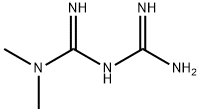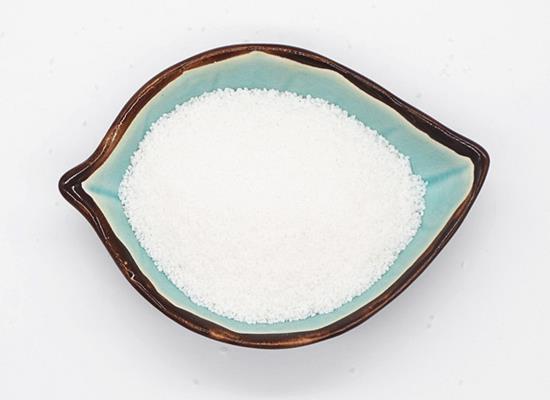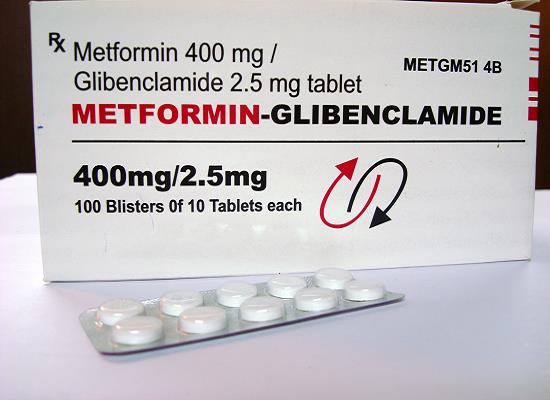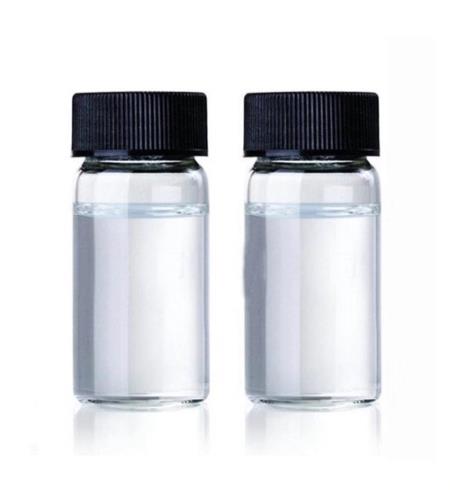Metformin: Activity, Pharmacodynamics, Mechanisms and Application Studies
General Description
Metformin are derived from galegine, a natural product from the plant Galega officinalis,used in herbal medicine in medieval Europe.The metformin is biguanide containing two coupled molecules of guanidine with additional substitutions.Unlike most modern drugs, metformin is therefore derived from a natural product used in herbal medicine and was not designed to target a particular pathway or disease mechanism.[1]Metformin is a biguanide, a drug class of herbal origin that has been widely used to treat diabetes since the 1950s.[2]Metformin (dimethylbiguanide) is an orally administered drug used to lower blood glucose concentrations in patients with non-insulin-dependent diabetes mellitus (NIDDM).[3]It is a widely-used drug that results in clear benefits in relation to glucose metabolism and diabetes-related complications.[1]It improves insulin sensitivity and thus decreases the insulin resistance that is prevalent in NIDDM. The efficacy of glycemic control achieved with metformin is similar to that achieved with sulfonylureas, although their modes of action differ. Metformin can be used either as initial therapy or as an additional drug when sulfonylurea therapy alone is inadequate.[3]
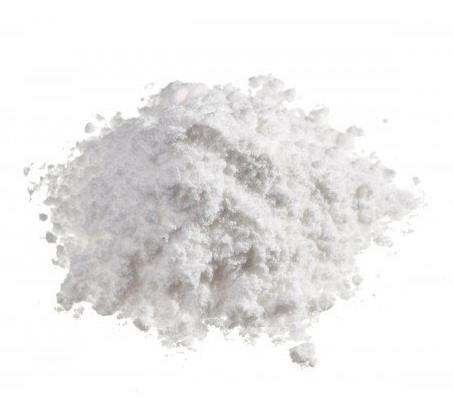
Figure 1 Metformin powder
Activity
Metformin (1,1-Dimethylbiguanide) inhibits the mitochondrial respiratory chain in the liver, leading to activation of AMPK, enhancing insulin sensitivity for type 2 diabetes research. Metformin can cross the blood-brain barrier and triggers autophagy.[4]
Pharmacodynamics
In Vitro:Metformin (1,1-Dimethylbiguanide) inhibits proliferation of ESCs in a concentration-dependent manner. The IC50 is 2.45 mM for A-ESCs and 7.87 mM for N-ESCs. Metformin shows pronounced effects on activation of AMPK signaling in A-ESCs from secretory phase than in cells from proliferative phase.[5]Metformin upregulates BAX activation with facilitation of BIM, BAD and PUMA, downregulates Bcl-2 and Bcl-xl, also induces cytochrome c release from mitochondria into the cytoplasm, directly triggering caspase-9-mediated mitochondrial apoptosis.[6]Metformin (0-500 μM) decreases glycogen synthesis in a dose-dependent manner.[7]And it shows cell viability and cytotoxic effects on PC-3 cells with IC50 of 5 mM.[8]
In Vivo:Metformin (100 mg/kg, p.o.) alone, and metformin (25, 50, 100 mg/kg) with isoproterenol groups attenuates myocyte necrosis.[4]In addition, metformin (>900 mg/kg/day, p.o.) results in moribundity/mortality and clinical signs of toxicity in Crl:CD(SD) rats.[9]Metformin shows therapeutic effect of metformin in mouse model of liver fibrosis associated with nonalcoholic steatohepatitis (NASH) in which hepatic function, NASH lesions and fibrosis are improved.[6]
Mechanisms
Metformin is a complex drug with multiple sites ofaction and multiple molecular mechanisms. The liver, kidney and intestines are the key target organs of metformin.The metformin increasing anaerobic glucose metabolism in enterocytes, resulting in reduced net glucose uptake and increased lactate delivery to the liver. Physiologically, metformin acts directly or indirectly on the liver to lower glucose production, and acts on the gut to increase glucose utilisation, increase GLP-1 and alter the microbiome. At the molecular level, metformin inhibits the mitochondrial respiratory chain in the liver, leading to activation of AMPK, enhancing insulin sensitivity (via effects on fat metabolism) and lowering cAMP, thus reducing the expression of gluconeogenic enzymes. Metformin also has AMPK-independent effects on the liver that may include inhibition offructose-1,6-bisphosphatase by AMP.[1]
Application
Metformin counters insulin resistance and impacts metabolic, vascular and other physiological functions through multiple effects that are individually modest but collectively substantial.[10]In the nematode worm, Caenorhabditis elegans,metformin lengthens lifespan through effects on intestinal microbial growth. More studies in humans found that metformin-dependent increases in Escherichia spp. and decreases in Intestinibacter spp. Metformin has been shown to have direct effects on inflammation, including effects on NF-κB signalling and differentiation of monocytes into macrophages, as well as suppressing proinflammatory cytokines from these macrophages. Besides,metformin suppresses several inflammatory cytokines in human plasma in individuals without diabetes. One of the cytokines suppressed bymetformin is CC motif chemokine 11 (CCL11), which has previously been found to contribute to age-related cellular and tissue dysfunction. Metformin may also control longevity through regulation of mammalian target of rapamycin (mTOR) signalling.[1]
Refernces
[1]Rena G, Hardie D G, Pearson E R. The mechanisms of action of metformin[J]. Diabetologia. 2017, 60(9): 1577-1585.
[2]Flory J, Lipska K. Metformin in 2019[J]. Jama.2019,321(19): 1926-1927.
[3]Bailey C J, Turner R C. Metformin[J]. New England Journal of Medicine.1996, 334(9): 574-579.
[4]Soraya H, et al. Acute treatment with metformin improves cardiac function following isoproterenol induced myocardial infarction in rats[J]. Pharmacol Rep. 2012;64(6):1476-84.
[5]Xue J, et al. Metformin inhibits growth of eutopic stromal cells from adenomyotic endometrium via AMPK activation and subsequent inhibition of AKT phosphorylation: a possible role in the treatment of adenomyosis[J]. Reproduction. 2013 Aug 21;146(4):397-406.
[6]Su Y, et al. Int Immunopharmacol. 2022 Mar 25;108:108683.
[7]Otto M, et al. Metformin inhibits glycogen synthesis and gluconeogenesis in cultured rat hepatocytes[J]. Diabetes Obes Metab. 2003,5(3):189-94.
[8]Avci CB, et al. Therapeutic potential of an anti-diabetic drug, metformin: alteration of miRNA expression in prostate cancer cells[J]. Asian Pac J Cancer Prev. 2013,14(2):765-8.
[9]Quaile MP, et al. Toxicity and toxicokinetics of metformin in rats[J]. Toxicol Appl Pharmacol. 2010,15;243(3):340-7.
[10]Bailey C J. Metformin: historical overview[J]. Diabetologia. 2017, 60(9): 1566-1576.
Related articles And Qustion
See also
Lastest Price from Metformin manufacturers

US $160.00-45.00/kg2025-04-21
- CAS:
- 657-24-9
- Min. Order:
- 1kg
- Purity:
- 99% purity,WhatsApp+86 18102676775
- Supply Ability:
- 20 tons

US $150.00-45.00/kg2025-04-21
- CAS:
- 657-24-9
- Min. Order:
- 1kg
- Purity:
- 99% Purity (What/sapp: +86 18145728414)
- Supply Ability:
- 1000 Tons/Month
